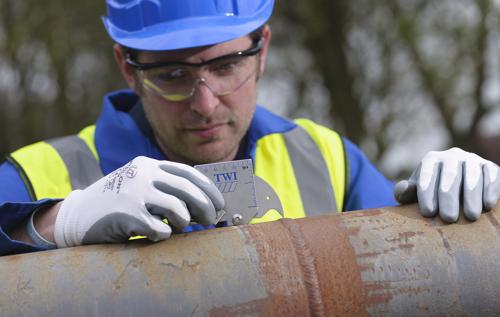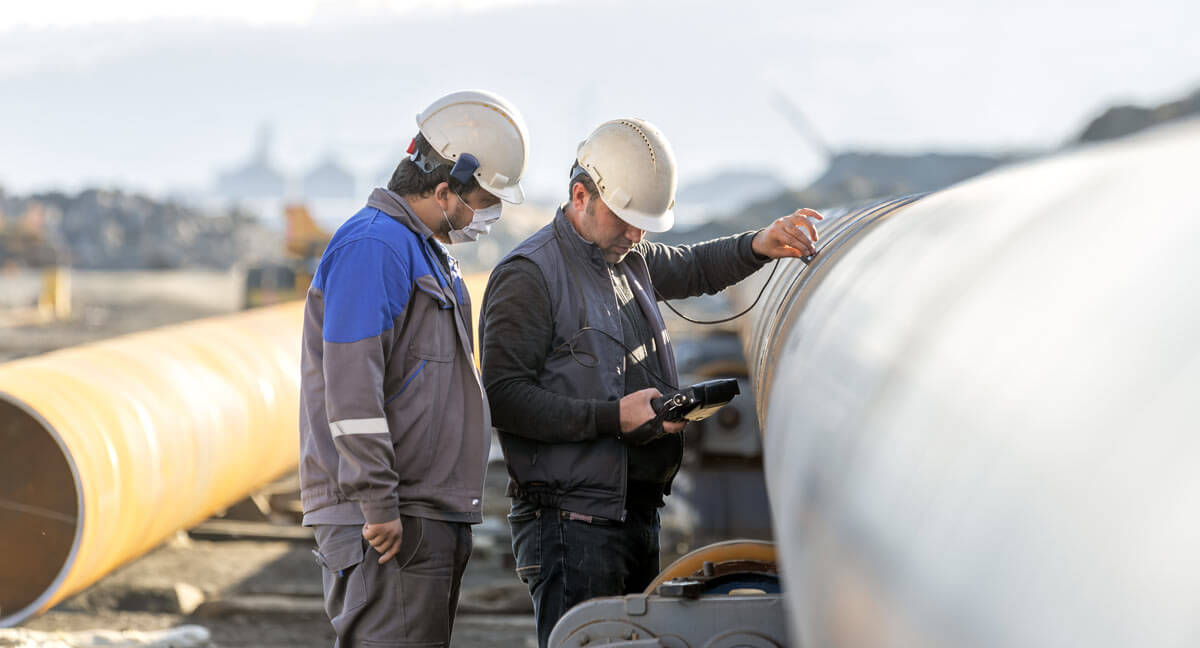Checking Out the Basics of Welding Inspection: A Thorough Examination of Processes, Devices, and the Importance of Top Quality Control in Welding Industries
Welding assessment offers as a cornerstone in the maintenance of safety and architectural stability across different sectors. Comprehending the effects of these methods raises vital inquiries regarding their effectiveness and the future direction of top quality assurance in welding.
Value of Welding Assessment
Welding inspection plays a vital function in making sure the stability and safety of welded frameworks. It serves as a systematic technique to assessing weld quality, determining possible flaws, and making certain compliance with well established requirements and specifications. The significance of welding evaluation extends past mere adherence to policies; it is crucial in safeguarding human lives and securing financial investments in framework.
Malfunctioning welds can lead to tragic failures, resulting in substantial economic losses, injury, or death. Therefore, strenuous examination procedures are essential to spot problems such as insufficient infiltration, porosity, or cracks prior to they escalate right into important failures. Additionally, effective welding inspection adds to the total performance and long life of structures, making sure that they can hold up against the conditions for which they were developed.
Furthermore, the implementation of welding assessment cultivates a society of quality and accountability within the welding sector. By focusing on examination, organizations demonstrate their commitment to quality, thereby improving their credibility and competition in the industry. Inevitably, welding assessment is not just a procedural action but a basic part of engineering honesty and safety assurance, essential for the successful implementation of welding projects across various fields.
Secret Inspection Processes
A comprehensive strategy to welding assessment includes numerous essential processes that are important for making sure weld top quality and architectural honesty. The first crucial process is aesthetic inspection, which allows assessors to determine surface area flaws such as cracks, porosity, and incorrect grain look. This technique functions as an initial evaluation to ensure that the weld fulfills specified standards.

Additionally, destructive screening might be carried out on sample welds to examine their mechanical properties and efficiency under stress and anxiety. This process entails impact, tiredness, and tensile screening to validate that the weld can hold up against functional conditions.
Lastly, documentation and coverage are vital components of the examination process. Maintaining precise documents of assessments, monitorings, and examination results helps make certain compliance with sector requirements and facilitates regular improvement in welding techniques. Collectively, these crucial procedures create the foundation of reliable welding inspection and high quality guarantee.
Devices for Weld Evaluation
Various devices are necessary for reliable weld analysis, each made to assess different elements of weld high quality and efficiency. Among the most commonly utilized are visual evaluation devices, including magnifying glasses and borescopes, which make it possible for inspectors to identify surface area defects such as splits, porosity, and improper blend.
In addition, ultrasonic screening (UT) tools is essential for identifying internal defects. This tool employs high-frequency sound waves to expose gaps click within the weld, guaranteeing the stability of the material. Radiographic testing (RT) devices, which make use of X-rays or gamma rays, likewise give insight into the internal framework of welds, enabling for the identification of gaps or inclusions.
For accurate measurements, calipers and evaluates play a significant duty in guaranteeing and determining weld dimensions adherence to defined tolerances. Hardness testers review the mechanical residential or commercial properties of the weld, guaranteeing it meets efficiency requirements.

Techniques for Analyzing Quality
How can the high quality of welds be reliably examined? A variety of techniques are utilized to examine weld integrity and make certain adherence to defined criteria. Visual inspection is one of the most fundamental technique, allowing examiners to recognize surface flaws such as cracks, porosity, or damaging. This non-destructive strategy works as an initial evaluation before even more see this innovative techniques are made use of.
Ultrasonic screening (UT) is one more noticeable technique that utilizes high-frequency acoustic waves to discover inner defects within the weld. Houston Welding Inspection. This approach provides a detailed sight of the weld's integrity without jeopardizing its architectural integrity. Additionally, radiographic screening (RT) employs X-rays or gamma rays to reveal interior issues, offering comprehensive understandings right into weld top quality
Magnetic particle testing (MT) is efficient for detecting surface and near-surface interruptions in ferromagnetic products, utilizing electromagnetic fields and colored bits to highlight issues. Lastly, dye penetrant testing (PT) can be utilized to discover surface-breaking problems by using a color that permeates right into cracks and is subsequently revealed.
Compliance With Industry Standards
Compliance with industry standards is important for ensuring the high quality and security of welded structures. These criteria, developed by organizations such as the American Welding Culture (AWS) and the American National Standards Institute (ANSI), provide standards that control the welding procedure, materials, and examination protocols. Abiding by these criteria not only guarantees the structural honesty of welds yet likewise alleviates dangers connected with failures that can cause disastrous consequences.

Welding inspectors are entrusted with confirming compliance with these standards throughout the welding procedure (Houston Welding Inspection). This includes assessing welding treatments, keeping an eye on welder qualifications, and performing complete evaluations of the last item. Non-compliance can lead to considerable monetary repercussions, task delays, and damages to a business's credibility
Routine training and updates on criteria are essential to keep workers educated and skilled, guaranteeing that all facets of welding procedures fulfill or exceed regulatory demands. Eventually, dedication to sector criteria serves as a foundation for excellence in the welding industry, promoting security and dependability in bonded frameworks.

Verdict
In final thought, welding evaluation offers as a critical element in maintaining the safety and security and stability of welded frameworks. Adherence to market standards makes certain compliance and advertises a society of quality within find out here the welding sector.
Furthermore, the application of welding assessment promotes a society of quality and liability within the welding industry. Ultimately, welding assessment is not merely a step-by-step step however a fundamental element of engineering honesty and safety and security guarantee, vital for the effective implementation of welding jobs across different markets.
A thorough method to welding examination includes a number of essential processes that are crucial for guaranteeing weld high quality and structural integrity. These standards, developed by organizations such as the American Welding Culture (AWS) and the American National Specification Institute (ANSI), supply guidelines that control the welding procedure, products, and examination methods.Welding examiners are tasked with verifying compliance with these standards throughout the welding process.